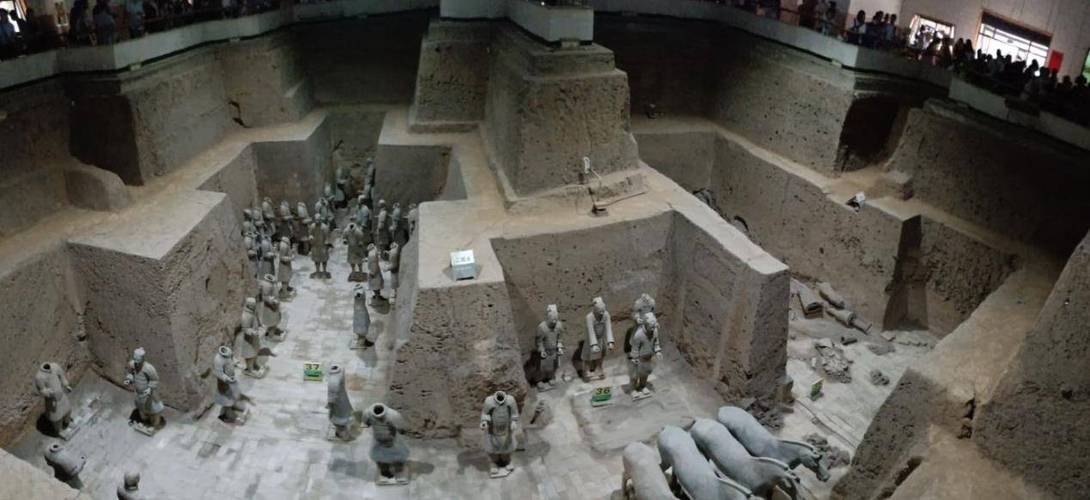
Why Has Qin Shi Huang's Tomb Never Been Excavated?
Deep within Mount Li, shrouded in mystery and legend, lies the tomb of Qin Shi Huang, China's first emperor. Though nearby discoveries like the Terracotta Army have captivated the world, the emperor's actual burial chamber remains untouched. The question that echoes through history is: Why?
Preservation Concerns: A Legacy at Risk
A primary reason for the non-excavation is the immense challenge of preserving the tomb's contents. Archaeological knowledge and technology, even today, are not sufficiently advanced to guarantee the safe extraction and preservation of the delicate artifacts and organic materials likely entombed within.
- Fragile Treasures: Historical records describe silks, paintings, and lacquered wooden objects placed within the tomb. Exposure to air and light after millennia could cause irreparable damage, reducing these historical treasures to dust.
- Unpredictable Environment: The tomb's internal environment is a complete unknown. Unforeseen factors like humidity levels, the presence of unknown gases, or even potential biological agents could lead to rapid deterioration upon excavation.
Potential Dangers Lurking Below
Ancient texts paint a vivid, if ominous, picture of the tomb's construction. These accounts, combined with modern analysis, highlight potential dangers that make excavation a risky endeavor.
- Mercury Rivers and Booby Traps: Historical texts describe the tomb as containing a miniature cosmos with rivers of flowing mercury. Modern surveys have confirmed high levels of mercury in the soil above the tomb, lending credibility to these ancient accounts. Additionally, legends speak of rigged crossbows and other traps meant to deter grave robbers. While their existence remains unconfirmed, such dangers cannot be entirely discounted.
- Structural Integrity: After over 2,000 years, the structural stability of the tomb is unknown. Excavation could compromise the tomb's integrity, potentially causing collapses that would damage or destroy the very artifacts it seeks to uncover.
Respect for Cultural Heritage and Beliefs
Beyond the practical considerations, the decision to leave the tomb undisturbed is also deeply rooted in respect for Chinese cultural beliefs and the emperor's legacy.
- Ancestral Reverence: Chinese culture places great emphasis on respecting ancestors and their final resting places. Disturbing the tomb of such a significant historical figure is seen by many as disrespectful and taboo.
- Preserving the Mystery: The allure of the unknown is a powerful force. The unexcavated tomb stands as a potent symbol of the past, fueling curiosity and historical fascination. Some argue that excavating the tomb would diminish its symbolic power, robbing future generations of the wonder it inspires.
In summary, Qin Shi Huangdi's actual tomb has never been excavated due to concerns about preservation, potential dangers, and respect for cultural heritage.
While the desire to unlock the secrets of the tomb is understandable, the risks associated with excavation are currently too great. The tomb stands as a testament to a bygone era, a reminder of the power of ancient civilizations, and a symbol of the mysteries that still lie buried beneath our feet.
Questions & Answers
Q1: Are there any plans to excavate the tomb in the future?
A: Currently, there are no concrete plans for excavation. The Chinese government is taking a cautious approach, prioritizing research and non-invasive methods to study the tomb before considering any excavation.
Q2: What are the most significant discoveries made near the tomb so far?
A: The discovery of the Terracotta Army, consisting of thousands of life-sized terracotta soldiers, horses, and chariots, is undoubtedly the most remarkable find. It provides invaluable insights into the military practices and artistry of the Qin Dynasty.
Q3: How can I learn more about Qin Shi Huang and his tomb?
A: Numerous books, documentaries, and academic articles explore the life and legacy of Qin Shi Huang and the mysteries surrounding his tomb. Reputable museums and historical societies can provide further resources for those eager to delve deeper into this fascinating subject.